Overview
Imagine stepping off the plane into a world where ancient traditions blend seamlessly with vibrant modernity, where the call to prayer echoes through winding medieval streets, and the aroma of spices fills the air. Welcome to Morocco, a land of enchantment that's about to become your home for the next eight days.
Our journey begins in Fes, the cultural heartbeat of Morocco, and takes you on a whirlwind adventure through blue-washed mountain towns, Roman ruins, and the endless dunes of the Sahara. You'll find yourself haggling in bustling souks, sipping mint tea with Berber nomads, and watching the sun set over the Atlantic in Essaouira. This isn't just a tour; it's a deep dive into the soul of Morocco.
But let's be clear – this isn't your typical tourist trap experience. We're talking about authentic encounters that will challenge your preconceptions and leave you forever changed. You'll navigate the labyrinthine medinas, sleep under a canopy of Saharan stars, and stand in awe before the towering gates of royal cities.
Are you ready to have your senses overwhelmed, your comfort zone expanded, and your Instagram feed filled with images that look too incredible to be real? Then buckle up, intrepid traveler. Your Moroccan adventure is about to begin, and trust me, you won't want to miss a single moment.
Duration: 10 days/9 nights
Itinerary: Ancient Medina of Fes, Volubilis, Chefchaouen, Merzouga, Erg Chebbi Dunes, Todra Gorge, Dades Valley, Ait Benhaddou, and Marrakech.

Price: chack bellow
Tour availability: Everyday
Highlights of the 10 days tour from Fes
Fes Medina – A maze of narrow alleys and vibrant souks.
Al-Qarawiyyin Library and Mosque – Oldest continually operating educational institution.
Attarine Souk – Bustling market filled with crafts and spices.
Merenid Tombs – Sunset views overlooking Fes.
Ouazzane – A quaint and authentic Moroccan town.
Chefchaouen – The "Blue City" with its iconic blue-washed streets.
Spanish Mosque – Stunning views of Chefchaouen at sunrise.
Volubilis – Well-preserved ancient Roman ruins.
Ifrane – "Little Switzerland" of Morocco.
Ziz Valley – Lush oasis amidst arid landscapes.
Erg Chebbi Dunes – Majestic sand dunes in the Sahara.
Berber camp – Overnight stay with stargazing in the desert.
Sunrise in the Sahara – Witness the dunes light up in a golden glow.
4x4 Desert Ride & Sandboarding – Adrenaline-packed fun on the dunes.
Todra Gorge – Towering canyon walls, river trails, and rock climbing.
Dades Valley – Explore unique rock formations like "Monkey Fingers."
Ait Benhaddou – Visit the UNESCO World Heritage site and film location.
Jardin Majorelle – Vibrant gardens once owned by Yves Saint Laurent.
Djemaa el-Fna – Nighttime magic with street food and performers.
Koutoubia Mosque – Iconic minaret and tranquil gardens.
Saadian Tombs & Bahia Palace – Historical splendor and stunning architecture.
Souks & Hammam – Haggle for treasures and unwind in a traditional spa.
Chouara Tannery – Revisit the bustling, colorful dye pits.
Final Mint Tea at Bab Boujloud – Reflect on the journey with one last toast.
Itinerary of Fes Tour 10 Days:
Day 1: Exploring Fes Medina
Wake up, sunshine – your Moroccan adventure starts now, and Fes isn't going to explore itself. Lace up your comfiest shoes because today, we're diving headfirst into the labyrinthine wonder that is the Fes Medina.
First things first: forget your map. I'm serious. In this medieval maze, GPS is about as useful as a chocolate teapot. Instead, let your senses guide you. That pungent aroma? It's coming from the tanneries, where leather has been treated the same way for centuries. Follow your nose, but brace yourself – it's a sensory assault that'll make your eyes water and your Instagram followers jealous.
As you weave through narrow alleys barely wide enough for a donkey (watch out for those, by the way – they have right of way and zero patience), you'll pass by intricate mosaic fountains, ornate wooden doors that belong in a museum, and enough street food to make your stomach growl louder than the call to prayer.
Speaking of which, when you hear the muezzin's melodic call echoing across the rooftops, take a moment. Find a quiet corner, or better yet, climb to a rooftop terrace. Watch as the city collectively pauses, and soak in the atmosphere. This, my friends, is the heartbeat of Fes.
Don't miss the Al-Qarawiyyin Library and Mosque – it's the oldest existing, continually operating higher educational institution in the world. Makes Oxford look like a newborn, doesn't it?
As the day winds down, let the aroma of freshly baked bread lure you to a local bakery. Grab a warm loaf, find a spot with a view, and watch as the setting sun paints the medina in hues of gold and amber. Day one down, and you've only scratched the surface. Sleep tight, traveler – tomorrow, we dive even deeper into the soul of Fes.
Day 2: Fes Cultural Immersion
Rise and shine, culture vultures! Yesterday was the appetizer; today, we're diving fork-first into the main course of Fes' rich cultural stew.
Kick off your day at the Bou Inania Madrasa. This 14th-century theological college is a masterpiece of Marinid architecture. Marvel at the intricate zellige tilework and carved cedar – it's like Instagram filters came to life, but better. Pro tip: go early to beat the crowds and catch the morning light dancing across the courtyard.
Next up, brace your nostrils for the infamous Chouara Tannery. Yes, it smells like a thousand gym socks left in the sun, but it's a living piece of history. Watch as tanners use techniques unchanged since medieval times, their bare feet submerged in stone pits filled with dye. They'll offer you mint leaves to combat the smell – take them, trust me.
Feeling peckish? Time to put your taste buds through their paces. Hunt down a hole-in-the-wall joint serving bessara, a hearty fava bean soup that's pure Fassi comfort food. Pair it with fresh bread and a glass of mint tea so sweet it'll make your teeth ache.
As afternoon rolls around, lose yourself (literally) in the sprawling Attarine Souk. This isn't just shopping; it's a full-contact sport of haggling, bantering, and sensory overload. From hand-woven carpets to fragrant spices, every stall is a treasure trove. Remember: the first price is always a fantasy – channel your inner negotiator and enjoy the dance.
Cap off your day with a sunset visit to the Merenid Tombs. Perched on a hill overlooking the medina, it's the perfect spot to watch the city transition from day to night. As the call to prayer echoes across the rooftops and the lights begin to twinkle, take a moment to soak it all in. This, my friends, is the Fes that will stay with you long after you've left.
Now, go find a rooftop restaurant, order a tagine, and raise a glass of local wine to surviving day two. Tomorrow, we bid farewell to Fes – but don't worry, Morocco's just getting started.
Day 3: Journey to Chefchaouen
Alright, early birds, time to bid adieu to Fes and hit the road. Today's destination? The Instagram darling of Morocco – Chefchaouen. But remember, this journey isn't just about the destination; it's about the mesmerizing roller coaster of landscapes you're about to witness.
As we leave Fes in our rearview mirror, watch the urban sprawl dissolve into the lush, rolling hills of the Rif Mountains. It's like Mother Nature decided to unfurl a carpet of green just for you. Keep your eyes peeled for glimpses of traditional Berber villages clinging to hillsides – these folks have been here since before "here" had a name.
About halfway through the journey, we'll make a pit stop in Ouazzane. This town might not make it onto most tourist itineraries, but that's exactly why we're stopping. Stretch your legs, grab a mint tea, and watch local life unfold around you. It's the Morocco most tourists never see – authentic, unhurried, and utterly captivating.
As we approach Chefchaouen, you might start to wonder if your vision's gone funky. Nope, that's just the famous blue wash of the city coming into view. Legend has it the color keeps mosquitos away, or maybe it represents the sky and heavens, or perhaps the locals just really, really like blue. Whatever the reason, it's a sight that'll stop you in your tracks.
Roll into town and feel the different vibe immediately. Fes was all hustle and bustle; Chefchaouen is like that laid-back cousin who's always telling you to chill out. The pace here is slower, the air cooler, and the streets... well, they're blue. Obviously.
Spend your evening getting lost in the azure alleyways. Every turn reveals a new shade of blue, a hidden cafe, or a picture-perfect staircase. As the sun sets, find a rooftop spot and watch as the blue city turns golden, then indigo in the fading light.
Tomorrow, we'll dive deeper into Chefchaouen's charms. For now, enjoy the calm, breathe in the mountain air, and maybe contemplate why you don't have more blue in your wardrobe. Sweet dreams, blue dreamers.
Day 4: Chefchaouen and Volubilis
Rise and shine, blue period Picassos! Today we're splitting our time between the azure alleys of Chefchaouen and the ancient Roman ruins of Volubilis. It's a day of contrasts that'll make your head spin faster than a Sufi dancer.
Kick off your morning with a hike to the Spanish Mosque. Perched on a hill overlooking Chefchaouen, it offers panoramic views that'll have you pinching yourself. Watch as the rising sun paints the blue city in soft pinks and golds. It's the kind of view that makes you question every life decision that didn't involve moving to Morocco yesterday.
Back in town, dive into the medina. Unlike Fes, you can't get lost here if you tried. Wander through the Kasbah, a 15th-century fortress that now houses a delightful garden and ethnographic museum. Then, channel your inner foodie at the market. Sample fresh goat cheese from the surrounding Rif Mountains – it's tangy, creamy, and utterly addictive.
Now, buckle up, buttercup. We're trading blue for beige as we head to Volubilis, the best-preserved Roman ruins in Morocco. As you approach, you'll see the ancient city sprawled across the plain like a half-finished jigsaw puzzle. It's a far cry from Chefchaouen's tight alleys, but no less mesmerizing.
Wander among towering columns and intricate mosaics, some still as vivid as the day they were laid. Keep an eye out for the Triumphal Arch and the Capitoline Temple. And remember, you're walking the same streets that toga-clad Romans strolled 2,000 years ago. Feel free to strike a Caesar pose – I won't judge.
As the afternoon sun starts to dip, make your way to the olive press. It's a reminder that while empires rise and fall, some things – like the Mediterranean's love affair with olive oil – never change.
We'll cap off the day with a sunset visit to the holy town of Moulay Idriss, perched dramatically on two hills. It's a pilgrimage site that until recently was closed to non-Muslims. Soak in the atmosphere of this sacred place as the call to prayer echoes through the valleys.
By the time we return to Chefchaouen, your mind will be reeling from the day's contrasts. From blue-washed streets to ancient ruins, from mountain cheese to Roman olive presses. This, my friends, is the magic of Morocco – where every day is a journey through time and culture. Rest up, because tomorrow, we're desert bound!
Day 5: Merzouga and Sahara Desert
Wake up with your hiking boots on, desert rats! Today, we're trading the blues of Chefchaouen for the golden hues of the Sahara. It's a long drive, but trust me, it's like flipping through the pages of a geographic magazine – every turn reveals a new, jaw-dropping landscape.
As we leave the Rif Mountains behind, watch the terrain morph into the cedars and apes of the Middle Atlas. We'll make a pit stop in Ifrane, Morocco's "Little Switzerland." With its Alpine chalets and manicured gardens, you'll wonder if you've accidentally teleported to the Alps. Snap a quick pic with the town's famous lion statue – a remnant of the area's now-extinct Atlas lion population.
Continuing south, the landscape slowly sheds its green coat for more arid attire. By the time we hit the Ziz Valley, you'll be convinced Mother Nature has a flair for the dramatic. This lush river oasis cuts through the barren landscape like a verdant lightning bolt, lined with countless palm trees and mud-brick kasbahs.
As afternoon melts into evening, you'll spot a line of undulating orange on the horizon. No, your eyes aren't playing tricks on you – those are the Erg Chebbi dunes, some of the largest in Morocco. Welcome to Merzouga, gateway to the Sahara.
Now, for the main event. Swap your wheels for a more traditional form of desert transport – the "ship of the desert," the dromedary camel. As you sway atop your humped steed, watch the sun paint the dunes in a palette of reds, pinks, and golds. It's like you've wandered onto the set of "Lawrence of Arabia," minus the film crew and plus a healthy dose of authenticity.
Your home for the night? A traditional Berber camp nestled in the dunes. After a dinner of tagine cooked over open flames (everything tastes better in the desert, I swear), settle in for a night of stargazing. With zero light pollution, the Milky Way stretches across the sky like a celestial highway. If you're lucky, you might catch a shooting star – quick, make a wish!
As you drift off to sleep in your desert tent, with the vast Sahara surrounding you, take a moment to appreciate the silence. It's a quiet so profound you can almost hear the earth spinning. Tomorrow, we rise with the sun for more desert adventures, but for now, let the gentle whisper of the dunes lull you to sleep. Sweet dreams, desert dreamers.
Day 6: Desert Adventure and Todra Gorge
Rise and shine, desert dwellers! Actually, scratch that – rise before the shine. We're catching the sunrise over the Sahara, and trust me, it's worth sacrificing a few Z's for. As the first rays peek over the dunes, watch the landscape transform from cool blues to warm golds. It's nature's own light show, and you've got front row seats.
Once the sun's up, it's time to get your adrenaline pumping. Swap your camel for a 4x4 and hold onto your keffiyeh as we tear across the desert. Feel the rush as we crest dunes and plunge down the other side. It's like a roller coaster, but with sand in your teeth and a grin plastered across your face.
For the truly adventurous (or possibly insane), there's sandboarding. Picture snowboarding, but replace the snow with sand and the cold with searing heat. Strap in, point yourself downhill, and pray to whatever desert gods you believe in. You'll probably eat sand, but hey, that's part of the experience, right?
As the day heats up, we'll bid farewell to the Sahara and point our compass towards the Todra Gorge. Watch as the landscape shifts again, the endless sea of sand giving way to rocky plateaus and eventually, towering canyon walls.
Arriving at Todra Gorge is like stumbling into nature's own cathedral. Sheer rock walls rise up to 500 feet on either side, their red and pink hues a stark contrast to the thin strip of sky above. The gorge is so narrow in places you can touch both walls at once – go ahead, give it a try. Just watch out for the occasional goat traffic jam.
For the rock climbers among us, Todra is a playground of epic proportions. With over 150 bolted routes, it's a veritable mecca for vertical enthusiasts. Even if you're not into dangling from a rope hundreds of feet up (no judgment), watching the climbers tackle these walls is a spectacle in itself.
As the day winds down, find a quiet spot by the river that cuts through the gorge. Let the sound of water tumbling over rocks wash away the desert dust. Reflect on the day's journey – from the vast emptiness of the Sahara to the towering walls of Todra. It's a reminder of Morocco's incredible diversity, all packed into a single day.
Tonight, we'll rest our weary bones in a local guesthouse, lulled to sleep by the whisper of the wind through the gorge. Tomorrow brings new adventures, but for now, let the day's memories of sand and stone dance behind your eyelids. Sweet dreams, gorge-ous explorers.
Day 7: Dades Valley and Ait Benhaddou
Rise and shine, road warriors! Today, we're trading in our rock-climbing shoes for some serious windshield time. But fear not, this isn't your average Sunday drive. We're about to embark on a journey through the "Road of a Thousand Kasbahs," and trust me, they weren't exaggerating with that name.
First stop: the Dades Valley. Picture a landscape that looks like it was dreamed up by a geology student on an acid trip. Rust-red cliffs rise from the valley floor in formations so bizarre you'll wonder if you're still on Earth. Keep your eyes peeled for the "Monkey Fingers," a series of rock spires that look like, well, I'll let you use your imagination.
As we wind our way through the valley, you'll spot kasbahs perched precariously on cliffsides. These mud-brick fortresses have stood for centuries, defying both gravity and common sense. It's like a real-life game of Jenga, Moroccan style.
Hungry? Hope so, because we're stopping at a local Berber village for lunch. Forget your fancy restaurants; this is home cooking at its finest. You'll be treated to a tagine so tender the meat falls off the bone with a stern look. And the bread? Let's just say you haven't lived until you've had bread baked in a traditional wood-fired oven.
Post-lunch, it's back on the road, but keep those eyelids peeled. We're heading to the pièce de résistance of our day: Ait Benhaddou. As you approach this ancient ksar (fortified village), you might experience a bit of déjà vu. That's because this UNESCO World Heritage site has starred in more Hollywood blockbusters than most A-list actors. "Gladiator," "Game of Thrones," "Lawrence of Arabia" – they've all borrowed Ait Benhaddou's timeless beauty.
We'll arrive just as the afternoon sun starts to dip, painting the mud-brick buildings in a warm, golden glow. It's the kind of light that makes everything look like a movie set – which, I suppose, it is. Climb to the top of the hill for a panoramic view that'll make your Instagram followers weep with envy.
As night falls, we'll settle into our nearby riad. But the day's not over yet. Tonight, we're learning the art of Moroccan cuisine. Roll up your sleeves and prepare to get your hands dirty as we master the art of couscous. Spoiler alert: it's not as easy as it looks, but it's twice as delicious when you've made it yourself.
By the time you hit the hay, your senses will be overloaded with the sights, smells, and tastes of the day. From otherworldly rock formations to Hollywood-worthy kasbahs, from home-cooked Berber lunches to DIY couscous – it's been a day of sensory overload in the best possible way. Sleep tight, ksar conquerors. Tomorrow, we tackle the bustling beast that is Marrakech!
Day 8: Marrakech Arrival and Exploration
Wakey wakey, eggs and bakey! Or should I say, wakey wakey, mint tea and msemen? Today, we're trading the tranquil landscapes of the Atlas for the controlled chaos of Marrakech. Buckle up, buttercup – this ain't no sleepy mountain village.
As we approach the Red City, you'll notice the landscape shift from rugged mountains to flat plains, and suddenly – bam! – a forest of minarets and palm trees sprouts on the horizon. Welcome to Marrakech, where medieval meets modern in a whirlwind of colors, scents, and sounds that'll make your head spin faster than a Gnaoua dancer.
First things first: let's drop our bags at a riad in the medina. These traditional Moroccan houses are like real-life TARDIS's – tiny doors opening into expansive courtyards with fountains, intricate tilework, and enough charm to make you consider a permanent change of address.
Now, it's time to dive headfirst into the labyrinth of the medina. Forget your map, forget your GPS – in these narrow alleys, your best bet is to embrace the chaos. Let the flow of the crowd carry you past spice merchants hawking pyramids of saffron and cumin, metalworkers hammering out intricate lanterns, and carpet sellers who could convince you that you absolutely need a 200-pound Berber rug in your life.
As the afternoon heat kicks in, seek refuge in the Jardin Majorelle. This electric-blue oasis was once owned by Yves Saint Laurent, and it's easy to see why he fell in love with it. The cacti and exotic plants offer a welcome respite from the dusty streets, and the color palette is so vibrant it makes the rest of Marrakech look positively muted in comparison.
But save some energy, because as night falls, we're heading to the beating heart of Marrakech: Djemaa el-Fna. This square is less a place and more a assault on the senses. Snake charmers, storytellers, acrobats, and food stalls all compete for your attention in a swirling maelstrom of activity.
Feeling peckish? Follow your nose to the food stalls. Ignore the vendors shouting that they have "the best" whatever – in Djemaa el-Fna, it's all the best. Whether it's a steaming bowl of harira soup, a tangy lamb tagine, or a paper cone of piping hot churros-like sfenj, your taste buds are in for a treat.
As the night wears on and the square shows no signs of slowing down, you might find yourself wondering if Marrakech ever sleeps. The answer? Not really. But don't worry, you will. Eventually. For now, let the rhythm of the Gnaoua drums and the scent of grilled meats guide you through this magical night. Tomorrow, we dive even deeper into the Red City's treasures. Sweet dreams, Marrakech marathoners – if you can sleep through the excitement, that is.
Day 9: Marrakech Highlights
Rise and shine, Red City rovers! Hope you've got your walking shoes on, because today we're diving deep into Marrakech's greatest hits. And let me tell you, this city's got more bangers than a Moroccan wedding.
First up, we're hitting the Koutoubia Mosque. This 12th-century behemoth is Marrakech's North Star – you can see its 230-foot minaret from pretty much anywhere in the city. Pro tip: while non-Muslims can't enter, the gardens around it are perfect for a morning stroll. Watch locals rush to work as the call to prayer echoes across the city – it's Marrakech's version of rush hour, minus the road rage.
Next, we're stepping into a time machine with a visit to the Saadian Tombs. These 16th-century mausoleums were sealed up for centuries, only to be rediscovered in 1917. It's like the ancient Moroccan version of finding that twenty bucks in your winter coat pocket – except instead of twenty bucks, it's priceless marble tombs and intricate stuccowork. Instagram, meet your match.
Feeling a bit overwhelmed by the hustle and bustle? Let's cool our heels at the Bahia Palace. This 19th-century masterpiece is what happens when you give a grand vizier an unlimited budget and a serious thing for Moroccan craftsmanship. Wander through room after room of zellige tiles, carved cedar ceilings, and stained glass windows. It's enough to give you a serious case of home envy.
As the afternoon heat kicks in, we're diving into the cool, dark alleys of the souks. This isn't shopping – it's an extreme sport. Haggle for everything from argan oil to zebra-print babouches (those pointy Moroccan slippers). Remember, the first price is always a fantasy – channel your inner tough guy and negotiate like your life depends on it. Because in the souk, it kind of does.
Hungry after all that bargaining? Time to put your new-found haggling skills to the test at a local spice shop. Pick up some ras el hanout – a spice blend so complex it'll make your head spin. It's great on everything from tagines to popcorn. Yes, popcorn. Don't knock it till you've tried it.
As the day winds down, we're treating ourselves to a hammam experience. Strip down, get scrubbed within an inch of your life, and emerge feeling like a newborn baby – albeit a very relaxed, slightly prune-like one. Fair warning: personal space is not a concept here. But trust me, once you've experienced the bliss of a proper Moroccan hammam, you'll wonder how you ever lived without it.
We'll cap off the night with a sunset drink at a rooftop bar. Watch as the city turns golden, then pink, then deep purple. The call to prayer mingles with the beats from nearby clubs, the smoke from the Djemaa el-Fna food stalls drifts up into the cooling air. This, my friends, is Marrakech in a nutshell – ancient and modern, chaotic and serene, all at once.
As you drift off to sleep tonight, with the faint sounds of the medina as your lullaby, take a moment to reflect on the whirlwind that is Marrakech. Because tomorrow, we bid farewell to the Red City and head back to where it all began. Rest up, Marrakech masters – our Moroccan adventure is nearing its end, but the memories? They're just beginning.
Day 10: Return to Fes and Farewell
Rise and shine, Moroccan mavens! It's our final day, and we're coming full circle back to where it all began. But don't you dare think we're just going to quietly slink back into Fes. Oh no, we're going out with a bang – or should I say, a whistle?
We're catching the early train from Marrakech to Fes, and let me tell you, this isn't your average commute. The journey takes you through the heart of Morocco, from the plains around Marrakech, through the Middle Atlas mountains, and into the Saïss Valley. It's like a highlight reel of your entire trip, minus the camel spit.
Pro tip: snag a seat on the left side of the train for the best views. Watch as olive groves give way to cedar forests, and tiny mud-brick villages flash by. It's a chance to reflect on the whirlwind of experiences you've had, from the blue alleys of Chefchaouen to the golden dunes of the Sahara.
As we roll into Fes, you might feel a sense of déjà vu. But trust me, you're not the same wide-eyed traveler who left this city 10 days ago. You're now a seasoned Morocco pro, capable of haggling with the best of them and able to distinguish your tajine from your tanjia.
We'll drop our bags and head straight for the Ville Nouvelle for our farewell lunch. I know, I know – why are we ditching the medina on our last day? Because, my friends, there's more to Moroccan cuisine than couscous and tagine (blasphemous, I know). We're talking cutting-edge fusion restaurants where traditional Moroccan flavors meet modern culinary techniques. Think pastilla spring rolls or camel burger sliders. It's the perfect way to bridge your Moroccan experience with the world you're about to re-enter.
Post-lunch, we're indulging in one last sensory overload with a visit to the Chouara Tannery. Yes, we saw it on day two, but trust me – it hits different now. The rhythmic stomping of the tanners, the rainbow of dye pits, the pungent smell that no amount of mint leaves can fully mask – it's a visceral reminder of the living history you've been part of for the past 10 days.
As the sun begins to set, make your way to Bab Boujloud, the ornate blue gate that serves as the main entrance to the old medina. Watch as locals stream in and out, going about their evening routines. Find a café, order one last mint tea (specify "sans sucre" unless you want a sugar high to rival your first day's culture shock), and just... observe.
This is your moment to soak it all in. The call to prayer echoing across the rooftops. The last rays of sun glinting off intricate mosaics. The tantalizing aroma of freshly baked bread mingling with the ever-present scent of leather and spices.
As darkness falls and the medina lights up, raise your glass (of tea, of course) to Morocco. To the places you've seen, the people you've met, the tagines you've devoured. To the sand in your shoes and the memories in your heart.
Tomorrow, you'll board a plane and re-enter the "real" world. But a part of you will always remain here, lost in the winding alleys of Fes, perched atop a camel in the Sahara, or haggling in the souks of Marrakech.
Farewell, Morocco. It's been one hell of a ride. Ma'a salama, until we meet again.
Inclusive and Exclusive of the tour:
Inclusive:
Pick up from your accommodation in Fes.
A/C modern 4x4 SUV, van, or minibus.
English-speaking driver or a driver and an English-speaking tour guide.
Accommodation for 9 nights in carefully selected hotels or riads.
Meals: Breakfast and dinner throughout the tour (specific details provided in the itinerary).
Scenic stops in Ifrane and the cedar forests.
Visit to Barbary macaques' habitat in the Middle Atlas.
Exploration of diverse landscapes, including the Middle Atlas Mountains, valleys, and desert.
Camel trek and overnight stay in a desert camp.
Guided tours in historical and cultural sites as specified.
Exclusive:
Lunches during the tour (available at local restaurants en route).
Drinks.
Entrance fees to monuments and attractions (when applicable).
Tips for the driver/guide (optional).
Personal expenses and souvenirs.
Travel insurance.
10 Days Fes Tour Price
The price of our 10 Days Fes Tour is flexible, varying based on factors such as accommodation choices, group size, and travel season. For a personalized quote tailored to your needs, please contact us. Our dedicated team will help craft an itinerary that aligns with your budget and preferences.
Map of the tour:
SEE AS WELL
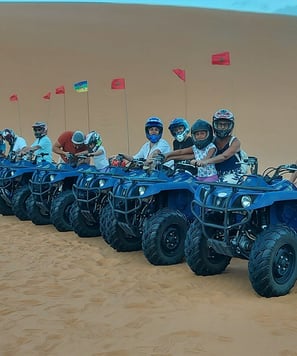

Fes to Marrakech Desert tour 2 days
Experience the best of Fes with our popular tours. From the vibrant markets of Fes to day trips to Chefchaouen, Meknes, and the desert.
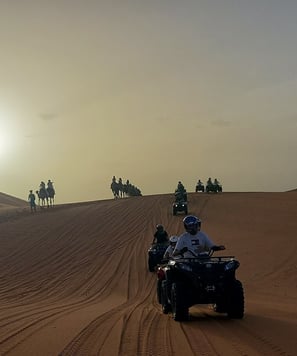

3 days desert tour from Fes to Marrakech
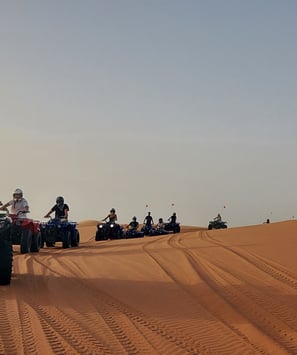

Fes to Marrakech Desert tour 4 days
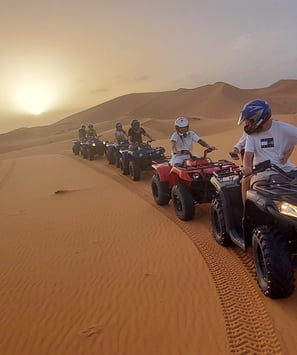

5 days desert tour from fes to marrakech
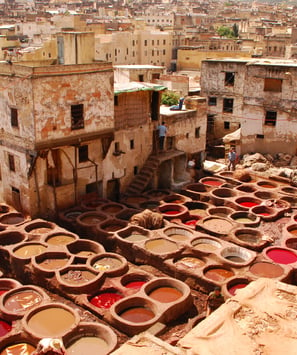

6 Days Morocco Tour From Fes
7 Days Morocco Tour From Fes
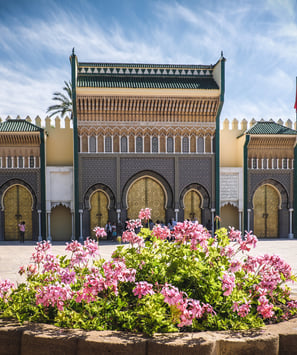

8 Days Morocco Tour From Fes
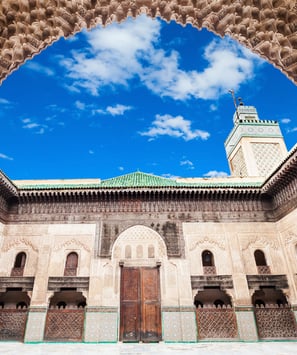

9 Days Morocco Tour From Fes
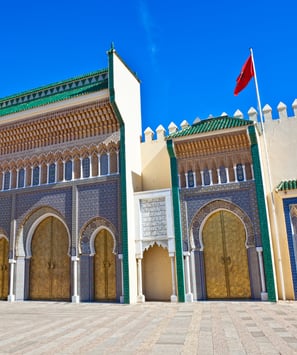

10 Days Morocco Tour From Fes
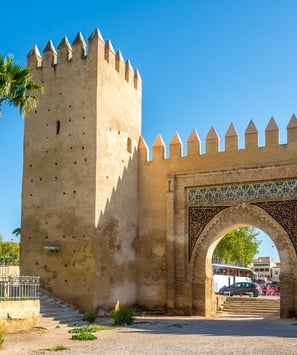

11 Days Morocco Tour From Fes
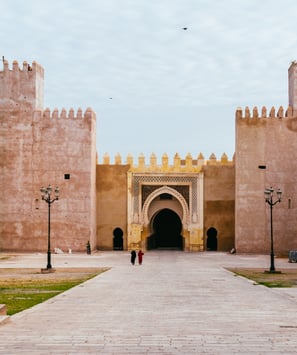

12 Days Tour From Fes
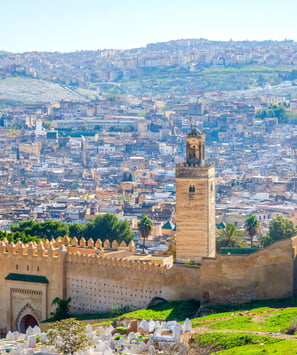

12 Days Tour From Fes
13 Days Tour From Fes to Marrakech
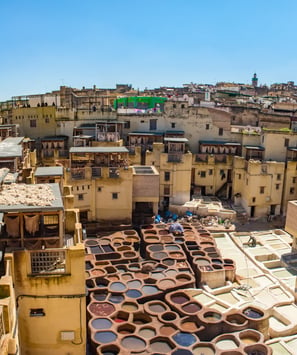

14 Days Tour From Fes to Marrakech
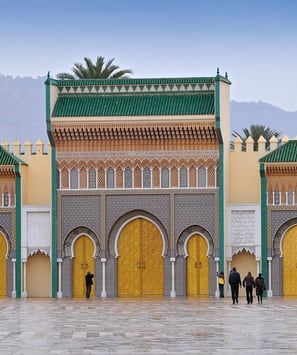

15 Days Tour From Fes to Marrakech
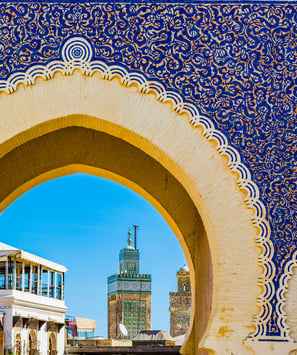

Know Before You Go:
Pre-Trip Planning Essentials
Alright, future Moroccan adventurers, let's talk brass tacks. Before you start dreaming of camel rides and tagine feasts, we've got some nitty-gritty details to iron out. Consider this your Morocco 101 crash course.
First up: timing. Morocco's not just a one-season wonder. Summer (June to August) is scorching hot, especially in Marrakech and the Sahara. You'll be sweating more than a glass of mint tea in the sun. Winter (November to February) can be surprisingly chilly, especially in the mountains. Spring (March to May) and fall (September to October) are your Goldilocks zones – not too hot, not too cold, just right for exploring.
Now, let's talk paperwork. Most Western countries get a free 90-day visa on arrival. But don't just rock up to the border with a smile and a sunhat. Check your passport's expiration date – it needs to be valid for at least six months beyond your planned stay. And for the love of couscous, make a copy of your passport. Trust me, it's a lifesaver if the original decides to go on its own Moroccan adventure.
Vaccinations: no mandatory jabs required, but it's wise to be up-to-date on routine vaccines. Hepatitis A and Typhoid are recommended. And pack a basic medical kit – finding Imodium in the middle of the Sahara is not an adventure you want to have.
Currency: The Moroccan Dirham (MAD) is the local cash. It's a closed currency, meaning you can't get it outside Morocco. Don't stress – there are ATMs in major cities and you can exchange money on arrival. Pro tip: bring some euros or US dollars as a backup.
Packing: Think layers, people. Moroccan weather can be as unpredictable as a camel's mood. Pack modest clothing – we're talking knees and shoulders covered, especially for women. And ladies, a lightweight scarf is your new best friend – use it to cover your head when entering mosques.
Language: Arabic is the official language, but French is widely spoken. English? Hit or miss. Learn a few Arabic phrases – "shukran" (thank you) and "la shukran" (no thank you) will be your most-used words, trust me.
Electricity: Morocco uses the Europlug (Type C & E). Bring an adapter if you're coming from the US or UK. And maybe pack a power bank – desert Insta-stories are a battery drain.
Lastly, let's talk expectations. Morocco is not a sanitized theme park version of an Arab country. It's real, it's raw, it's sometimes frustrating, but always fascinating. Expect to get lost, expect to haggle, expect to drink more mint tea than you thought humanly possible.
Remember, flexibility is your best friend here. Things might not always go according to plan, but that's where the magic happens. Embrace the chaos, roll with the punches, and prepare for the adventure of a lifetime. Yalla! (That's "let's go" in Arabic – see, you're learning already!)
Accommodation Options
Listen up, comfort seekers and adventure sleepers! Morocco's got a bed for every budget and a pillow for every preference. From palatial riads to no-frills desert camps, your nightly nests are as varied as the landscape itself.
Let's start with the crown jewel of Moroccan accommodations: the riad. These traditional houses-turned-hotels are like stepping into a Moroccan fever dream. Centered around a courtyard, often with a fountain that'll have you running to the bathroom every five minutes, riads are an Instagrammer's paradise. Intricate tilework, lush plants, and more throw pillows than you can shake a tajine at – it's like sleeping in a sultan's boudoir. Just don't expect an elevator; your luggage and your quads are in for a workout.
For those whose budgets don't quite stretch to "sultan," fear not. Plenty of budget hotels and hostels dot the cities. They might not have the wow factor of a riad, but they'll give you a clean bed and a hot shower – sometimes that's all you need after a day of medina madness.
Now, let's talk about the ultimate glamping experience: desert luxury camps. Forget everything you know about camping. These bad boys come with proper beds, en-suite bathrooms, and enough Moroccan lanterns to light up a small city. Fall asleep to the sound of... absolutely nothing. The desert silence is so profound, you'll swear you can hear the stars twinkling.
For the more adventurous (or budget-conscious), basic desert camps offer a similar experience, minus the frills. You'll still get a bed, but maybe swap the en-suite for a shared bathroom. Pro tip: learn to pee in the sand. It's a life skill you never knew you needed.
In the mountains, you'll find everything from basic gîtes (think mountain huts with a Moroccan twist) to luxurious kasbahs. Some even come with their own hammams. Nothing beats a steam and scrub after a day of trekking.
For longer stays or family trips, consider an apartment rental. They're plentiful in cities like Marrakech and give you the chance to play house in Morocco. Just don't expect to whip up a tajine that rivals the street vendors'.
One word of caution: in Morocco, stars on hotels are more of a suggestion than a rule. A five-star hotel might be missing a few points, while a three-star riad could blow your socks off. Read reviews, manage expectations, and remember – it's all part of the adventure.
Lastly, for the truly intrepid, there's always the option of a homestay. Live with a local family, eat home-cooked meals, and get a crash course in Moroccan family life. Fair warning: personal space might become a distant memory, but the cultural immersion is unbeatable.
Remember, where you lay your head is part of the journey. Choose wisely, sleep deeply, and may your mint tea always be hot and your calls to prayer not too early. Sweet dreams, Morocco wanderers!
Transportation Tips
Buckle up, buttercup! Navigating Morocco is an adventure in itself, and your mode of transport can make or break your trip. From high-speed trains to cantankerous camels, let's break down your options for getting from A to B (or should I say, from Agadir to Beni Mellal).
First up, the train. Morocco's rail network is the pride of North Africa, and for good reason. It's clean, efficient, and puts many European services to shame. The high-speed Al Boraq line will zip you from Tangier to Casablanca faster than you can say "Play it again, Sam." But here's the kicker – book first class. The price difference is negligible, and you'll get assigned seats. Trust me, you don't want to play musical chairs with a carriage full of Moroccan families on a holiday weekend.
For shorter trips, grand taxis are your go-to. These shared Mercedes sedans are a staple of Moroccan transport. They operate on fixed routes and only leave when full – and by full, I mean six passengers squeezed in like sardines. It's not comfortable, but it's cheap and quintessentially Moroccan. Pro tip: pay for two seats if you value your personal space (or have eaten too much couscous).
In cities, petit taxis are your friend. These small cars operate on meters (usually) and are perfect for zipping around town. Just remember, they're color-coded by city – so don't try hailing a blue taxi in Marrakech, you'll look like a right tourist.
For the brave (or foolhardy), there's always the option of renting a car. The roads are decent, but the driving... let's just say it's creative. Lane markings are more of a suggestion, and the concept of right-of-way is open to interpretation. Plus, good luck finding a parking spot in the medinas. My advice? Leave the driving to the locals.
Speaking of locals, bus travel is a great way to channel your inner Moroccan. CTM and Supratours are the main companies, offering reliable services between cities. The buses are comfortable enough, with air conditioning that works... sometimes. Just don't expect Swiss precision when it comes to timetables.
For those hard-to-reach spots, like mountain villages or desert camps, you'll likely find yourself in a 4x4. These sturdy vehicles are built for Morocco's more rugged terrain. Warning: the rides can be bumpy. If you're prone to motion sickness, pop a pill and pray.
And let's not forget the ship of the desert – the camel. While not practical for long-distance travel (unless you've got a lot of time and a very padded seat), a camel trek in the Sahara is a must-do experience. Just remember, camels are nature's drama queens. They'll groan, they'll spit, they'll give you the stink eye – but deep down, they're softies.
Lastly, don't underestimate the power of your own two feet, especially in the medinas. These old city centers are a maze of narrow alleys where no car can go. Getting lost is part of the charm, so lace up those comfy shoes and start wandering.
Remember, in Morocco, the journey is often as memorable as the destination. So sit back, relax, and enjoy the ride – even if that ride is on a grumpy camel with a vendetta against tourists. Yalla, let's go!
Moroccan Cuisine: What to Try
Alright, foodie adventurers, loosen those belt buckles and prepare your taste buds for a culinary rollercoaster. Moroccan cuisine isn't just food; it's a full-contact sport for your senses. From simmering tagines to sticky-sweet pastries, we're diving fork-first into the must-try dishes of Morocco.
Let's start with the heavyweight champion: the tagine. This slow-cooked stew, named after the conical clay pot it's cooked in, is Morocco on a plate. Lamb with prunes and almonds, chicken with preserved lemon and olives, kefta (meatball) with eggs – the combinations are endless. The secret? A blend of spices that'll make your nose tingle and your mouth water. Pro tip: eat it with bread, not a fork. You haven't lived until you've scooped up tagine juices with a chunk of freshly baked khobz.
Speaking of bread, Moroccans don't mess around when it comes to carbs. From fluffy msemen (square pancakes) to crispy harcha (semolina flatbread), bread is less a side dish and more a utensil. Breakfast? Bread. Lunch? Bread. Dinner? You guessed it, more bread. Your gluten-free diet? Leave it at the airport, pal.
Now, let's talk couscous. This ain't the instant stuff you nuke in the microwave. Real Moroccan couscous is a Friday tradition, lovingly steamed and fluffed by hand. Topped with tender vegetables and fall-off-the-bone meat, it's comfort food at its finest. Just pace yourself – a good couscous can expand in your stomach like a carb-loaded airbag.
For the adventurous eaters, there's tangia. Think of it as tagine's rowdy cousin from Marrakech. Meat (usually lamb) is slow-cooked in a clay urn with spices and preserved lemon until it's so tender you could eat it with a spoon. Traditionally made by bachelors, it's the ultimate man-food. Ladies, don't let that stop you – embrace your inner Moroccan bro.
Street food more your style? You can't swing a cat in a Moroccan medina without hitting a food stall. Snack on piping hot sfenj (Moroccan doughnuts), crispy flatbread stuffed with spicy kefta, or if you're feeling brave, a steaming bowl of snail soup. Yes, snails. They're delicious, I promise.
Let's not forget about Morocco's liquid gold: mint tea. Served in tiny glasses and poured from improbable heights, it's more than just a drink – it's a national pastime. Sweet enough to make your dentist weep, it's the perfect accompaniment to a plate of syrupy pastries. Speaking of which, don't leave without trying chebakia (sesame cookies fried and soaked in honey) or kaab el ghzal (crescent-shaped almond cookies known as "gazelle horns").
For the brave (or foolhardy), there's the infamous sheep's head. Yes, you read that right. Slow-cooked until the meat falls off the skull, it's considered a delicacy. The cheeks and tongue are the prime cuts, but if you're feeling adventurous, go for the eyes. They say it improves your own vision. (They're lying, but it makes for a great story.)
Remember, in Morocco, eating is a social event. Meals are shared, fingers are used, and diets are forgotten. Embrace the communal plates, perfect your bread-scooping technique, and for the love of all that's holy, don't ask for a knife and fork. You're in Morocco now, baby – dive in and get messy!
Cultural Etiquette and Customs
Alright, culture vultures, listen up! Morocco isn't just a place; it's a living, breathing tapestry of traditions that'll make your head spin faster than a Sufi dancer. Mess up these cultural cues, and you'll stick out like a camel in a kasbaah. So, let's dive into the dos and don'ts of navigating Moroccan social norms.
First things first: dress code. Morocco's not Saudi Arabia, but it's not South Beach either. Ladies, leave the booty shorts and crop tops at home. Think loose, flowy, and covered. Shoulders, knees, and cleavage are best kept under wraps, especially in rural areas. Gents, you've got it easier, but still, no shirtless wandering through the medina, please. You're not Tarzan, and this isn't the jungle.
Now, let's talk greetings. Moroccans are a warm bunch, but don't go in for the bear hug right off the bat. A handshake is your safe bet, but don't be surprised if it's followed by a kiss on each cheek – yes, even for the fellas. Just follow the local's lead and try not to headbutt anyone in the process.
Speaking of physical contact, public displays of affection are a big no-no. Save the smooching for behind closed doors. Holding hands? That's fine... if you're the same gender. Yes, you'll see men walking hand in hand – it's a sign of friendship, not a Grindr meetup.
Let's address the elephant in the room: alcohol. Morocco's a Muslim country, but it's not dry. You can find booze in larger cities and tourist areas. However, public drunkenness is seriously frowned upon. Keep it classy, people. And during Ramadan? Stick to drinking in hotels and high-end restaurants, out of respect for those fasting.
Now, food etiquette. Eating with your hands is the norm for many dishes. But for the love of couscous, use your right hand only. The left hand is considered unclean (think toilet duties). And when sharing a communal dish, stick to your section – don't go fishing for the best bits from the other side of the tagine.
Time to talk bargaining. In the souks, haggling isn't just accepted; it's expected. But remember, it's a dance, not a wrestling match. Start at about 30% of the asking price and work your way up. And if you start the haggle, be prepared to follow through. Walking away after a long negotiation is considered rude. Oh, and don't haggle for essentials like food – you'll look like a cheapskate.
Photography can be a minefield. Always ask before snapping pics of people or inside mosques. Some folks believe photos steal their soul, others just want to be left alone. And if someone agrees to a photo, they might expect a tip. Fair's fair – you're not National Geographic.
Religion is a big deal here. Respect it. Don't enter mosques unless invited (the Hassan II Mosque in Casablanca is an exception). During the call to prayer, keep your voice down. And during Ramadan, avoid eating, drinking, or smoking in public during daylight hours.
Lastly, let's address the squat toilet situation. You'll encounter these traditional toilets, especially in rural areas. Embrace the thigh burn and remember – it's actually better for your digestive system. Just remember to BYOTP (Bring Your Own Toilet Paper).
Remember, Moroccans are generally a laid-back, hospitable bunch. They'll forgive the occasional faux pas if you're genuinely trying to respect their culture. So relax, smile, and get ready to experience some of the warmest hospitality on the planet. Just don't forget to use your right hand!
Shopping in Morocco: Souks and Artisans
Alright, retail warriors, prepare to enter the gladiatorial arena of Moroccan commerce – the souk. Forget your sterile shopping malls and predictable high streets. Here, shopping is a full-contact sport, a sensory overload, and a masterclass in the art of negotiation all rolled into one. Welcome to the world of "how much?" and "too expensive!"
First things first: leave your credit card in the hotel safe. This is a cash economy, baby. Those dirhams burning a hole in your pocket? They're about to fly faster than a magic carpet. But before you go all Aladdin in the Cave of Wonders, let's lay down some ground rules.
Rule number one: the price tag is a myth. That beautiful leather bag? The intricately carved wooden box? That dazzling array of spices that'll make your kitchen smell like a Marrakech market? They're all priced for negotiation. Start at about 30% of the asking price and prepare for a verbal tango that would make Shakespeare proud.
But remember, haggling isn't a blood sport. It's a dance, a game, a centuries-old tradition. Smile, joke, maybe feign disinterest (but not too much – you don't want to offend). Accept the mint tea if offered; it's part of the process. And for the love of all that's holy, don't start haggling unless you're serious about buying. Walking away after a prolonged negotiation is the souk equivalent of a dine-and-dash.
Now, what to buy? Carpets are the crown jewels of Moroccan souks. But unless you've got a degree in textile engineering, you're at the mercy of the seller. Know your knots (literally – more knots usually mean better quality), and remember: if it seems too good to be true, it probably is. That "antique Berber rug" might have been made last week in a factory.
Leather goods are another Moroccan specialty. From butter-soft babouches (those pointy slippers you'll see everywhere) to bags that smell so leathery you'll think you're in a cowboy movie. Just be prepared for the, er, unique aroma of the tanneries. Pro tip: accept the sprig of mint they offer you at the entrance. Trust me on this one.
Metalwork, ceramics, textiles – the souks are a treasure trove of artisanal crafts. Watch coppersmiths hammer out intricate designs, see potters spin clay into works of art, marvel at weavers creating rugs thread by painstaking thread. It's like Etsy come to life, but with better tagines.
Speaking of which, don't leave without a tagine pot. Even if you never use it to cook (let's be real, it'll probably end up as a fancy fruit bowl), it's the ultimate Moroccan souvenir. Just make sure it's glazed for cooking if you do plan to use it – lead poisoning isn't the kind of spice you want in your dinner.
For the culinary adventurers, the spice souks are a must-visit. Mountains of colorful powders and pungent herbs will have your nose doing overtime. Ras el hanout, saffron, cumin – stock up and spice up your life. Just don't blame me when your attempt at recreating that amazing tagine ends up tasting like a confused curry.
One word of caution: beware of fakes. Those "authentic" Berber jewels might have been made in China. That "argan oil"? Could be vegetable oil with a fancy label. Buy from reputable shops or cooperatives if authenticity is important to you.
Remember, shopping in Morocco isn't just about the stuff you buy. It's about the stories you'll tell, the skills you'll learn (haggling is a life skill, trust me), and the memories you'll make. So dive in, embrace the chaos, and may your bargaining be fierce and your purchases be many. Happy hunting, souk survivors!
Photography Tips for Morocco
Listen up, wannabe Ansel Adams! Morocco is a shutterbug's wet dream, a kaleidoscope of colors, textures, and scenes begging to be captured. But before you start snapping away like a tourist on steroids, let's lay down some ground rules to keep you from becoming an Instagram cliché or, worse, a culturally insensitive jerk.
First off, that fancy DSLR? It's great, but sometimes your smartphone is your best friend. Nothing screams "rob me" like a $3000 camera around your neck in a crowded medina. Plus, you can sneak quicker, more discreet shots with your phone. Just don't be that idiot watching the sunset through your screen. Experience first, 'gram later.
Now, let's talk ethics. Moroccans aren't zoo animals or props for your poverty porn. Always, always ask before photographing people. A smile and a "La bas?" (How are you?) can go a long way. Some folks might ask for money – fair enough, they're not performing monkeys. Either pay up or politely move on. And for the love of Allah, don't photograph women without explicit permission. It's not just rude; it can be dangerous.
Timing is everything. The harsh midday sun will wash out those vibrant Moroccan colors faster than you can say "overexposed." Golden hour is your BFF here. Dawn and dusk paint everything in a warm, magical light that'll make even a pile of garbage look Insta-worthy. Plus, you'll avoid the crowds. Win-win.
Speaking of light, embrace the shadows. Moroccan architecture is all about intricate details and patterns. Play with the interplay of light and shadow in riads, mosques, and medinas. Those geometric designs? They're practically begging for some moody, contrast-heavy black and white shots.
Get high, photographically speaking. Rooftop terraces offer stunning panoramas of medinas and mountains. Just remember to ask permission if it's someone's private terrace. A few dirhams can buy you access and a killer shot.
Don't just shoot the obvious. Yes, the blue streets of Chefchaouen are gorgeous, but so is the old man selling mint in the corner or the cat lounging in a sun-dappled doorway. Look for the details, the moments between the moments. That's where the real Morocco lives.
For the love of all that's holy, learn to edit. Morocco's colors are vibrant, but there's no need to crank the saturation to 11. A subtle touch can make your photos pop without looking like a acid-trip fever dream. And please, for the sake of future historians, keep at least one unfiltered version. #NoFilter isn't just a hashtag; it's a public service.
Gear-wise, pack a wide-angle lens for those sweeping desert landscapes and tight medina alleys. A nifty fifty (50mm lens) is perfect for portraits and street scenes. And invest in a good polarizing filter – it'll make those blue skies pop and cut through haze.
Finally, remember the golden rule of travel photography: be present. Don't experience Morocco solely through your viewfinder. Sometimes, the best shot is the one you don't take, the moment you actually live rather than capture. Morocco will etch itself into your memory far more vividly than any photograph ever could.
Now go forth and shoot, you budding Cartier-Bresson. Just remember: the best camera is the one you have with you, and the best photograph is the one that tells a story. Make it a good one.
Sustainable Tourism in Morocco
Alright, eco-warriors and conscious globetrotters, listen up! Morocco's not just a playground for your Instagram feed; it's a living, breathing country with real people and real environmental challenges. So, let's talk about how to get your Morocco fix without leaving the place worse off than a camel with a bad case of the hump.
First off, ditch the plastic water bottle addiction. I get it, Moroccan tap water isn't exactly Evian. But instead of leaving a trail of empty bottles from Tangier to Taghazout, invest in a good water filter or purification system. Your wallet (and the local landfills) will thank you. Plus, you'll look less like a clueless tourist and more like a savvy traveler. Win-win.
Speaking of looking savvy, let's talk accommodations. Sure, that big, shiny resort with the infinity pool looks tempting. But why not opt for a locally-owned riad or guesthouse instead? You'll get a more authentic experience, your money will go directly into the local economy, and you might actually learn something about Moroccan culture beyond how to say "another cocktail, please" in Arabic.
When it comes to getting around, public transport isn't just for budget backpackers. Morocco's trains and buses are surprisingly efficient, and they're a great way to reduce your carbon footprint. Plus, you'll get to rub shoulders with locals and maybe even practice your broken Darija. Just don't expect Swiss punctuality – "Inshallah" (God willing) is the operative word when it comes to timetables.
Now, let's talk souvenirs. That mass-produced "traditional" trinket might be cheap, but it's about as Moroccan as a Big Mac. Instead, seek out local artisans and cooperatives. Yes, you might pay a bit more, but you'll be supporting traditional crafts and taking home something truly unique. And for the love of all that's holy, don't buy anything made from endangered animals or plants. That includes coral, folks – it's not just a pretty rock.
Food is a big part of Moroccan culture, and it can also be a big part of sustainable travel. Eat local, eat seasonal, and don't be afraid to try that hole-in-the-wall joint that looks like it might violate every health code in the book. It's probably where the locals eat, and your dirham will go straight into the local economy. Just maybe pack some Imodium, just in case.
When it comes to cultural sites, remember: take only photos, leave only footprints. And speaking of photos, ask before snapping pictures of people or private property. It's not just polite; it's about respecting local cultures and traditions.
Volunteer tourism is a tricky one. While your heart might be in the right place, many volunteer programs do more harm than good. If you really want to help, donate to reputable local charities instead. Your money will go a lot further than your two weeks of unskilled labor.
Lastly, and this might be the toughest one: be mindful of your water usage. Morocco is a water-stressed country, and that long, hot shower you're dreaming of after a day in the Sahara? It's a luxury many locals can't afford. Keep it short, sweet, and infrequent.
Remember, sustainable tourism isn't about deprivation; it's about making choices that benefit both you and the places you visit. It's about leaving Morocco better than you found it, so future generations can experience the same magic you did. So go forth, explore responsibly, and may your travels be as sustainable as they are unforgettable. Yalla!
Health and Safety Considerations
Alright, intrepid explorers, let's talk about keeping your sorry hides intact while gallivanting through Morocco. This isn't your mama's bubble-wrapped vacation, but with a little common sense and these nuggets of wisdom, you'll return home with nothing more serious than a tagine addiction and a slight case of mint tea overdose.
First up, the dreaded Delhi Belly, Moroccan Misstep, or whatever cute name you want to give to gastrointestinal rebellion. Yes, the food is amazing, but your delicate Western gut might need some time to adjust. Start with fully cooked foods, avoid tap water (including ice cubes), and maybe ease into that street food scene. But for the love of all that's holy, don't skip the street food entirely – just pack some Imodium and embrace the adventure. Your taste buds will thank you, even if your intestines temporarily hate you.
Speaking of water, the Sahara isn't the only place you can get dehydrated. Morocco's heat can be brutal, especially if you're not used to it. Drink water like it's your job, even if it means more trips to those charming squat toilets. And no, mint tea doesn't count as hydration – it's more like a national sport.
Sun protection isn't just for beach bums. The Moroccan sun is fierce, and it'll turn you into a lobster faster than you can say "aloe vera." Slather on that sunscreen, rock a hat, and embrace the shade. Your future self will thank you when you're not peeling like a snake on your flight home.
Now, let's address the elephant in the room – or should I say, the pickpocket in the medina. Petty theft can be an issue, especially in crowded areas. Keep your wits about you, your wallet close, and maybe invest in one of those dorky money belts. It's better to look like a tourist than to be a broke one.
Ladies, let's have a chat. Morocco is generally safe, but you might get some unwanted attention. Dress modestly, be aware of your surroundings, and perfect your "don't mess with me" face. And gentlemen, this goes for you too – respect local customs and keep your shirts on, for everyone's sake.
Traffic in Moroccan cities is less an organized system and more a real-life game of Frogger. Crosswalks are mere suggestions, and the concept of right-of-way is open to interpretation. Look both ways, then look again, then maybe say a quick prayer before crossing. And if you're brave (or foolish) enough to rent a car, well, may Allah be with you.
When it comes to health, prevention is your best friend. Get your jabs before you go – Hepatitis A and Typhoid are recommended. And pack a basic medical kit. Finding antidiarrheal meds in the middle of the Atlas Mountains isn't an adventure you want to have.
Speaking of mountains, if you're planning on trekking, don't overestimate your abilities. The Atlas Mountains aren't your local nature trail. Hire a guide, tell someone your plans, and for the love of all that's sacred, break in your hiking boots before you go. Blisters and vertigo aren't the souvenirs you want.
Lastly, use your common sense. Don't flash expensive jewelry or electronics, be wary of overly friendly strangers offering to be your guide, and maybe don't try to smuggle that carpet home in your carry-on.
Remember, Morocco isn't inherently dangerous – it's just different. Embrace the chaos, stay alert, and you'll be fine. After all, millions of tourists visit every year and return home with nothing worse than a slight addiction to argan oil and a newfound dislike for instant couscous. So go forth, explore responsibly, and may your travels be as safe as they are memorable. Bismillah!
Packing List for Your Morocco Adventure
Alright, you soon-to-be Moroccan explorers, let's talk about cramming your life into a suitcase. Forget your "just in case" mentality – we're going for a "just enough" approach here. Morocco's not the moon, folks. They've got shops. But there are a few essentials that'll make your trip smoother than a freshly waxed camel.
First up, clothes. Think loose, light, and modest. Ladies, leave the booty shorts and crop tops at home. We're going for "respectful traveler," not "Spring Break Gone Wild." Loose pants, long skirts, and tops that cover your shoulders are your new best friends. Gents, you've got it easier, but still, no shirtless wandering through the medina, please. And everyone, pack a light jacket or sweater. Desert nights are colder than your ex's heart.
Footwear is crucial. You'll be doing more walking than a mailman on steroids. Comfortable, broken-in shoes are a must. And by comfortable, I don't mean your favorite stilettos. Think sturdy sandals or sneakers. And for the love of all that's holy, break them in before you go. Nothing ruins a trip faster than blisters the size of Morocco on your feet.
Sun protection isn't optional; it's as essential as oxygen. A wide-brimmed hat, sunglasses, and enough sunscreen to coat a small country should be at the top of your list. The Moroccan sun is fierce, and it doesn't discriminate. Even if you "never burn," trust me, you will.
Now, let's talk tech. A universal adapter is a must unless you want your devices to become expensive paperweights. A portable charger is your new best friend – Instagram won't update itself, after all. And consider a portable Wi-Fi device if you can't live without constant internet. Just remember to look up from your screen occasionally – Morocco is prettier than your Facebook feed.
Toiletries are tricky. Yes, you can buy most things there, but do you really want to waste precious haggling energy on finding your specific brand of deodorant? Pack the essentials, including hand sanitizer (lots of it) and wet wipes. Trust me, after a day in the Marrakech medina, you'll be bathing in hand sanitizer.
A reusable water bottle with a built-in filter is worth its weight in gold. Moroccan tap water isn't exactly Evian, and you don't want to leave a trail of plastic bottles from Casablanca to Merzouga.
For the ladies (and long-haired gents), a scarf isn't just a fashion statement – it's a multitool. Use it to cover your head when entering mosques, as a makeshift picnic blanket, or to disguise a bad hair day. The possibilities are endless.
Don't forget a small first-aid kit. Include the basics plus any personal medications. Finding Imodium in the middle of the Sahara isn't an adventure you want to have.
A money belt might make you feel like a dorky tourist, but it's better than feeling like a broke tourist after being pickpocketed. Keep your valuables close and your dirham closer.
Lastly, pack your sense of adventure and a healthy dose of patience. Morocco operates on its own time zone, where "inshallah" (God willing) is the answer to every "when" question. Embrace it. After all, you're on vacation, not running a military operation.
Remember, you're not moving to Morocco (unless you are, in which case, ignore everything I just said). Pack light, pack smart, and leave room for all the souvenirs you'll inevitably buy. Because let's face it, you're definitely coming home with at least one tagine pot and enough argan oil to moisturize an elephant. Bon voyage, and may your luggage always arrive when you do!
Budget Planning and Money Matters
Listen up, penny-pinchers and big spenders alike – it's time to talk dirham. Morocco can be as cheap as a street-side harira or as expensive as a night in a Saharan glamping tent. Your wallet's destiny is in your hands, so let's break it down.
First off, forget your credit card fantasies. While larger hotels and fancy restaurants might accept plastic, Morocco runs on cash. ATMs are plentiful in cities, but can be as rare as a sober camel in rural areas. Stock up on dirham before venturing into the sticks. And for the love of all that's holy, inform your bank you're traveling. Nothing kills a Moroccan buzz faster than a frozen card and a collect call to your financial overlords.
Now, let's talk numbers. Budget travelers can scrape by on 300-400 dirham a day (that's about $30-40 USD). This'll get you a bed in a hostel, street food feasts, and enough left over for a mint tea or three. Mid-range folks, plan for 600-1000 dirham daily. This opens doors to nicer riads, sit-down restaurants, and guided tours. Luxury lovers, the sky's the limit. 2000+ dirham a day will have you living like a pasha, complete with five-star riads and private desert camps.
Bargaining isn't just a hobby in Morocco; it's a way of life. In souks and taxicabs, the first price is always a fantasy. Start at about 30% of the asking price and enjoy the dance. But remember, it's not a blood sport. If you've haggled a artisan down to his last dirham for a hand-woven carpet, maybe let him keep his dignity (and feed his family).
Tipping, or "baksheesh," is expected for good service. In restaurants, 10% is standard unless a service charge is included. Taxi drivers appreciate rounded-up fares. And if someone helps you find your way in the medina, a few dirham will suffice. Just don't go overboard – you're a tourist, not a walking ATM.
Speaking of tourists, beware the "tourist tax." That charming little café with the perfect view of the sunset? Chances are, it's charging triple what the local joint around the corner does. Sometimes it's worth it for the ambiance, but don't be afraid to venture off the beaten path for better deals and more authentic experiences.
For the budget-conscious, embrace local transport. Trains are comfortable and affordable, especially if you opt for second class (first class is for wimps and the elderly). City buses are dirt cheap but can be crowded and confusing. Shared "grand taxis" are a happy medium – more comfortable than buses, cheaper than private taxis, and a great way to practice your Arabic small talk.
Accommodation can eat up your budget faster than you can say "five-star riad." Consider homestays or guesthouses for a more authentic (and wallet-friendly) experience. Just be prepared for less privacy and more family-style meals. And remember, in Morocco, breakfast is often included. Stuff yourself silly in the morning and you might just be able to skip lunch.
Lastly, keep some emergency cash stashed away. You never know when you'll need to bribe your way out of a tight spot (kidding, mostly) or splurge on that gorgeous hand-woven rug you definitely don't need but absolutely must have.
Remember, Morocco is what you make of it. You can live like a king for a week or stretch your dirham for a month of adventures. Either way, you'll leave with a lighter wallet and a heavier heart. Now go forth and spend wisely, you budgeting Berbers!
Best Time to Visit Morocco
Alright, time travelers, let's talk about when to drop your suitcase on Moroccan soil. Spoiler alert: there's no one-size-fits-all answer. Morocco's got more microclimates than a schizophrenic weather app, so strap in for a whirlwind tour of the Moroccan calendar.
Spring (March to May) is the golden child of Moroccan seasons. The weather's as perfect as a freshly baked khobz – warm but not sweltering, with wildflowers carpeting the countryside. It's like Mother Nature rolled out the green carpet just for you. But here's the rub: everyone and their camel knows this. Expect crowds thicker than a Marrakech souk and prices higher than a Atlas mountain peak. If you don't mind sharing your slice of paradise, spring's your jam.
Summer (June to August) is when Morocco turns into Satan's sauna. Marrakech and Fes become giant tagines, slow-cooking tourists in their own sweat. The Sahara? Forget about it, unless you fancy recreating Lawrence of Arabia with less glamour and more heatstroke. But if you can handle the heat, you'll find fewer crowds and lower prices. Plus, the coastal towns are actually pleasant. Essaouira, with its constant sea breeze, becomes the unofficial capital of "Morocco for people who don't like melting."
Autumn (September to November) is spring's laid-back cousin. The thermometer chills out, the summer crowds have vamoosed, and there's a mellow vibe in the air. It's perfect for sipping mint tea on a riad rooftop without fear of spontaneous combustion. The Sahara becomes accessible again, and the changing colors in the High Atlas are more Instagram-worthy than your entire food photo collection. Just pack a jacket for those chilly desert nights.
Winter (December to February) is Morocco's best-kept secret. Sure, it's cooler, but we're talking "light jacket" cool, not "Frozen" cool. The snow-capped Atlas Mountains make for killer photos, and you can even ski if that's your jam. Marrakech and the south are pleasantly warm during the day. But here's the kicker: tourist numbers drop faster than a clumsy camel, meaning you'll have those Instagram spots all to yourself. Just avoid the north unless you're a fan of rain and mud.
Now, let's talk wildcards. Ramadan, the Islamic month of fasting, is a moveable feast (literally). It's a fascinating time to visit, with festive nights and sleepy days. But be prepared for limited daytime dining options and potential grumpiness from fasting locals. Eid al-Fitr (the end of Ramadan) and Eid al-Adha (two months and ten days after Ramadan ends) are major holidays. Everything shuts down, but the party vibes are off the charts.
For desert rats, the Sahara is best tackled in the shoulder seasons (April-May or September-October). Unless slow-roasting on a sand dune is your idea of a good time.
Beach bums should aim for July to September when the Atlantic waters warm up enough for more than just a toe-dip. Just be prepared to share the sand with half of Europe on their summer holidays.
Ultimately, the best time to visit Morocco is when you can. Each season has its charm, its challenges, and its unique experiences. Just remember: no matter when you go, pack sunscreen, a sense of humor, and an elastic waistband for all that couscous. Morocco's waiting, habibi – the question is, are you ready?
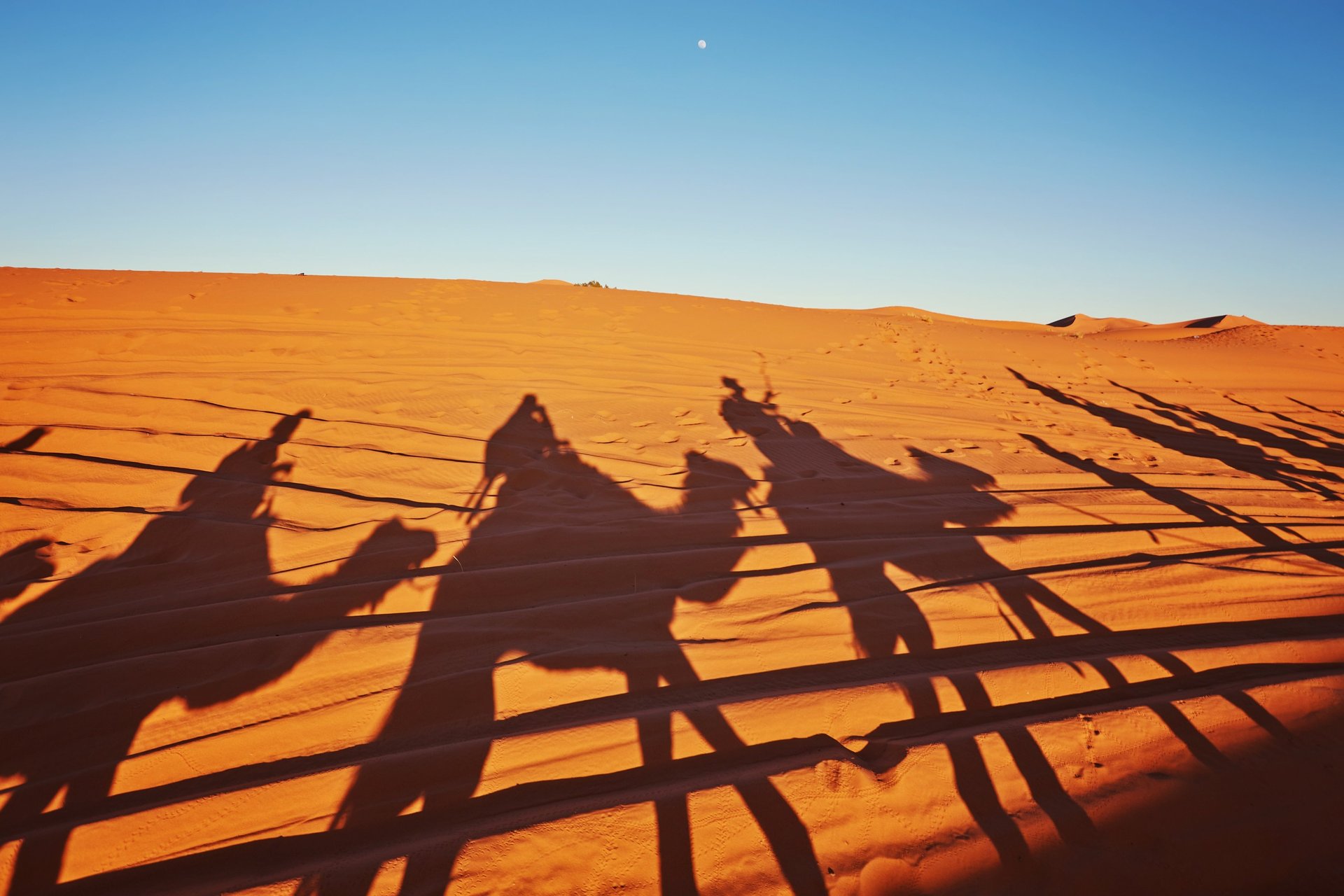
Get in touch
Please use the form below to email us, and we’ll respond as quickly as possible. If you don’t hear from us within 24 hours, feel free to send a WhatsApp message or call us at +212625473756. We look forward to connecting with you!
Address
N 45, Hay El Qods Rue 06, Rissani 52450. Morocco
Contact Us
Our Services
Tangier Tours
Agadir Tours
Hot Air Balloon
Sandboarding
Camel Trekking
Merzouga Horse Riding
Quad Biking
4x4 Desert Safaris
Photography Tours
Desert Camping


